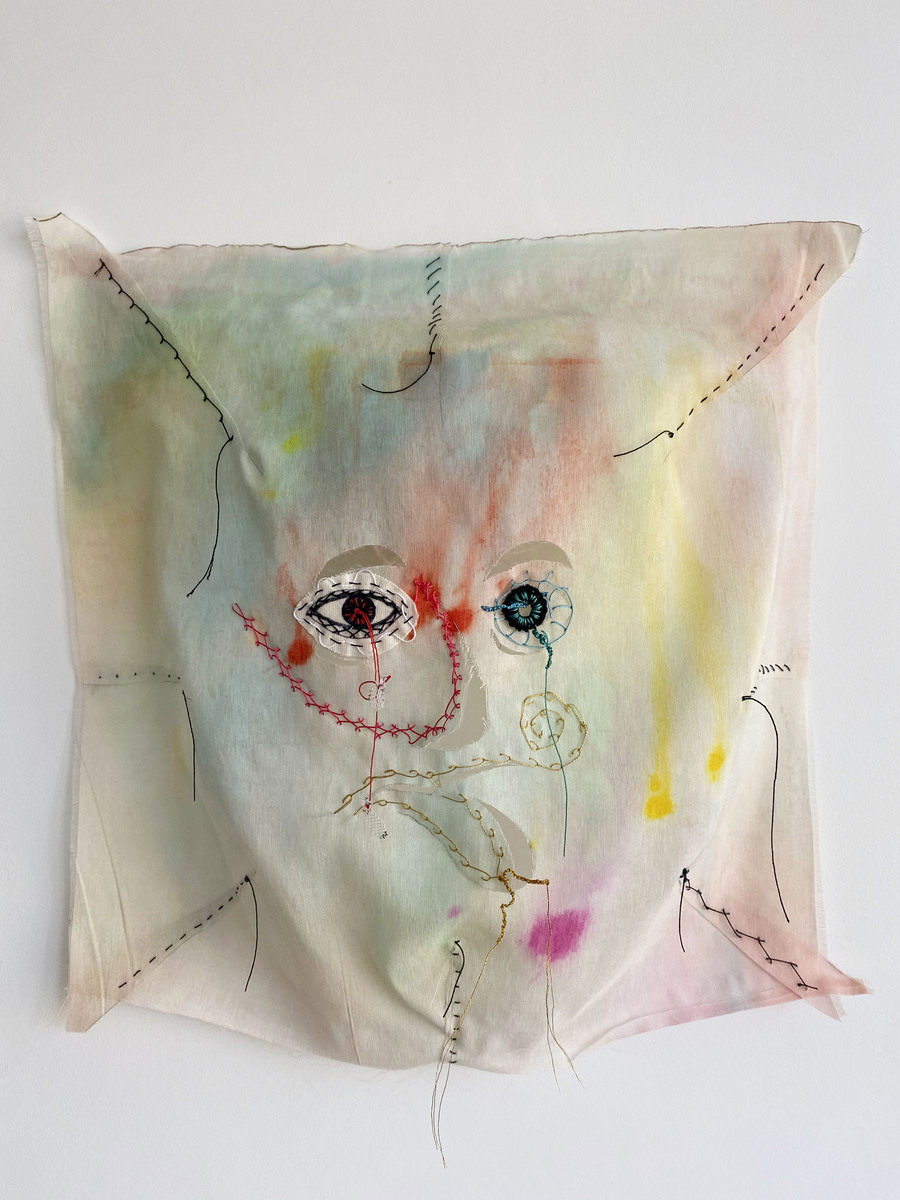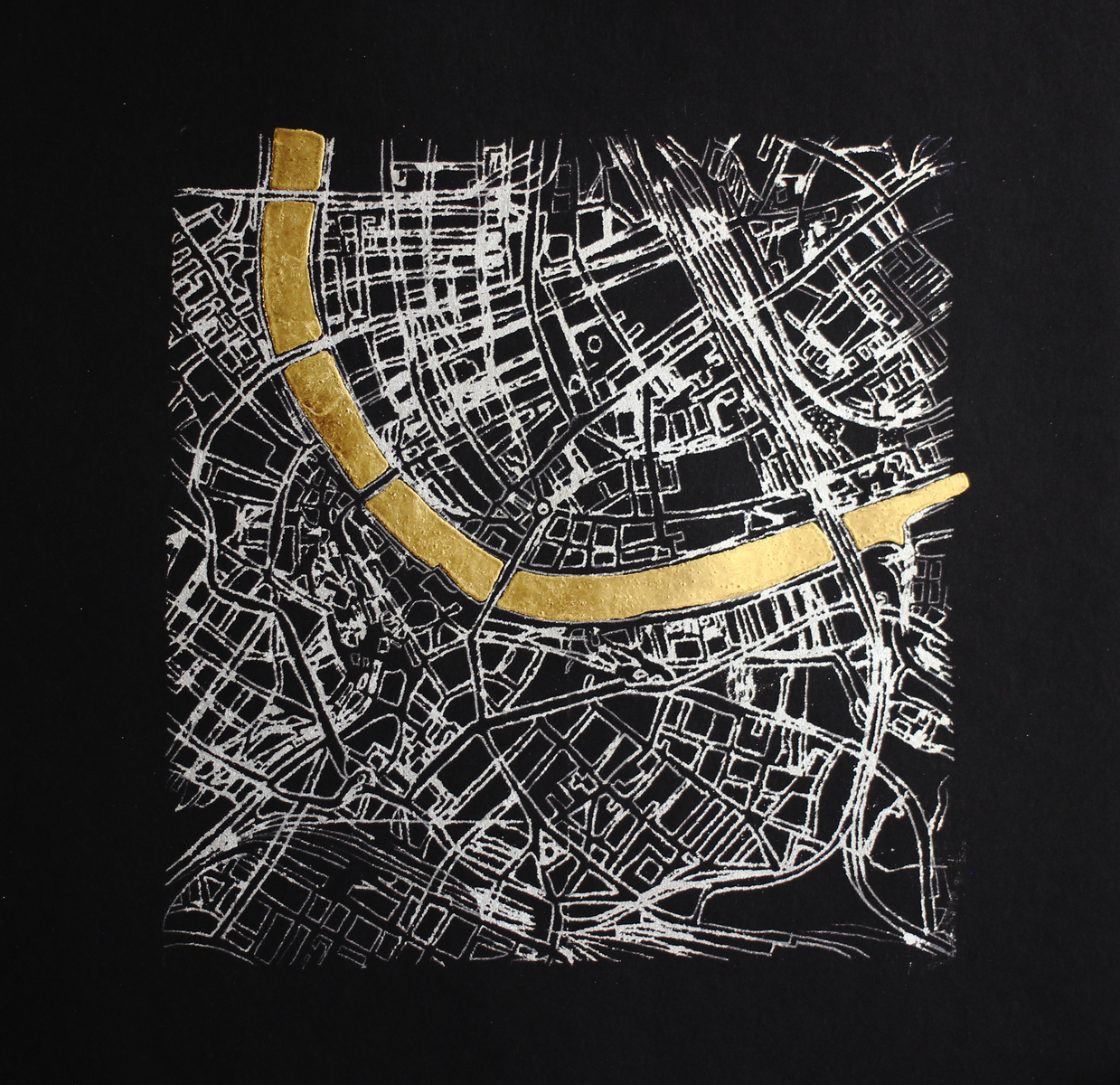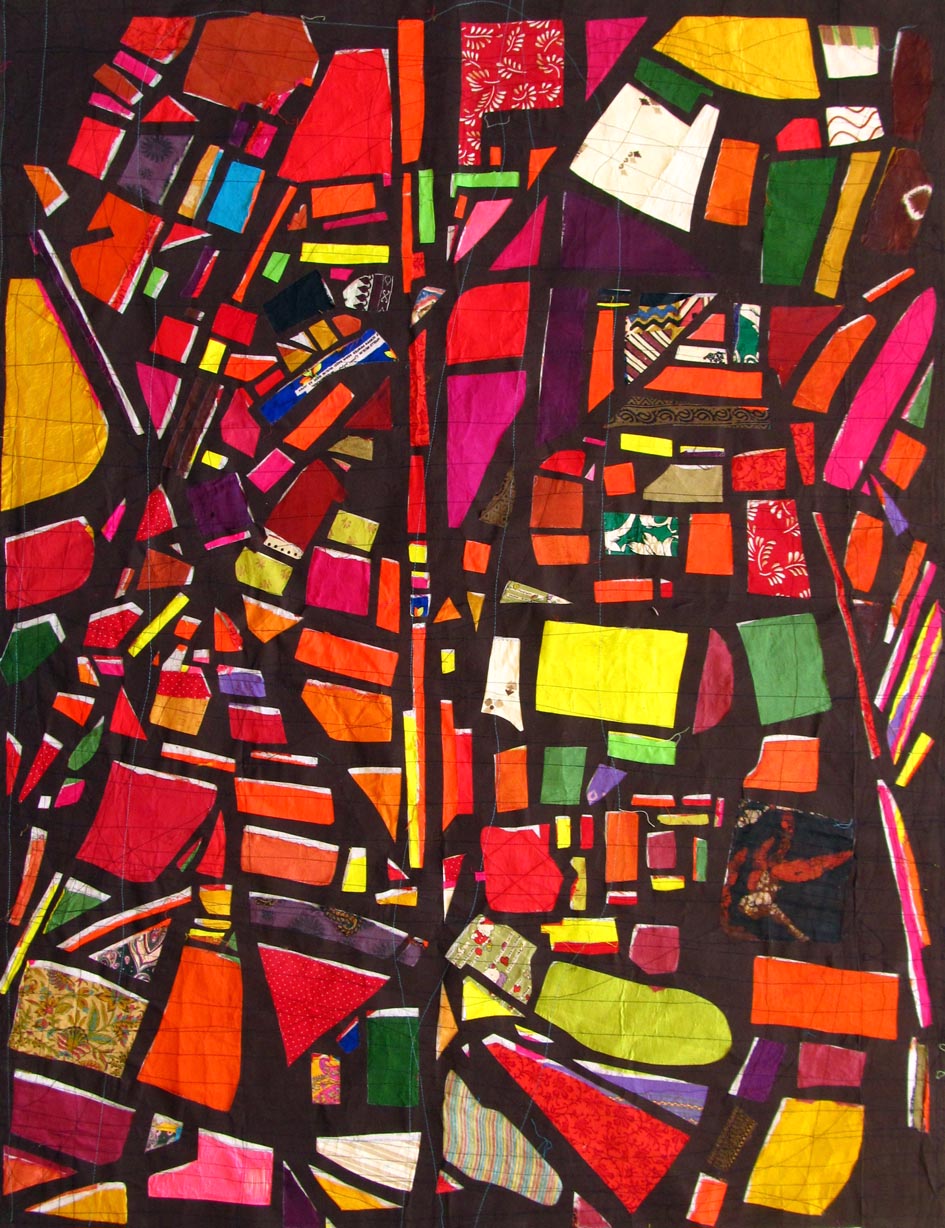ARTWORKS

The Sinistry
Mapping Sense of the World

Nidhi Khurana lives and works in New Delhi, India. Central to her artistic practice is the exploration of maps and the concept of mapping, which she has reinvigorated through a variety of media (especially textiles), locations and discoveries. With a deep interest in the interplay between natural and urban landscapes, Khurana explores diverse environments, including fields, forests, gardens, kitchens, factories, workshops and more. Her personal experiences are integral to her art as she allows each location she is mapping to guide her from within.
Born into a business-focused family with no artistic lineage, Khurana is a pioneer in her own right. Her artistic journey began at a young age with a simple yet profound question: what do you want to become? She considered various paths, including writing, dancing, journalism and art. Although she wasn’t entirely sure where these choices would lead her, one thing was clear – her heart was inclined towards the arts. But she had no understanding of what being an artist involved; she had to create her own path.
Khurana’s schooling played a pivotal role in shaping her artistic identity. At the prestigious Welham Girls’ School in Dehradun (Uttarakhand state), she found a nurturing environment that encouraged her artistic inclinations. She received a BA in Fine Arts from Maharaja Sayajirao University in Baroda, Gujarat in 2003 and an MA in Arts and Aesthetics from Jawaharlal Nehru University in New Delhi in 2009.
It was during a residency in Delhi that the world of maps and mapping started to influence her work. The purchase of her first car, coupled with the daily drive from the suburbs to the city centre, unravelled a unique artistic exploration.
Her experiences of getting lost in Delhi’s labyrinthine streets became the impetus for an ambitious artwork: a large site-specific installation reflecting her “daunting” struggle as a woman alone in Delhi, and her growing fascination with maps. Challenging established concepts of mapping, the resulting piece was not a conventional representation of Delhi’s geography but a metaphorical portrayal seen through her car window, depicting the city in shades of grey and black.


As part of the residency, Khurana delved into the history and architecture of Delhi, discovering its identity as seven distinct cities through the ages. The installation encapsulated how powerful and influential the connection between a place and a person can become in certain circumstances. The residency transformed her relationship with the city, which evolved from disdain to genuine affection – she characterises that time in her career as “making friends with my city”.
When the exhibition ended, Khurana’s work had to be destroyed – it was simply too large to move elsewhere. Consequently, she decided to design her pieces to be foldable, allowing for easy transportation and storage.
In 2018, Khurana was mesmerised by the Aboriginal tribal maps (Songlines) she encountered during a brief visit to Australia. In stark contrast to the defined lines and boundaries of conventional cartography, these indigenous language maps presented territories as vibrant, overlapping patches of colour, offering a unique and profound perspective on spatial representation.
The trip led Khurana to research the rich history of pre-colonial mapping techniques. In particular, the intricate and colourful maps of the Mughal era (1526–1857) offered a vivid picture of India’s past, blending artistic finesse with geographic precision.The Mughals, known for their patronage of the arts, produced maps that were not merely navigational tools but fascinating pieces of visual storytelling. Alongside relevant cartographic details such as rivers and mountains, they also depicted ships at sea and animals in their habitats, with elaborate cultural motifs in the title area.
Jain cosmograms added a further layer of complexity to Khurana’s understanding of spatial representation. Combining sacred symbols, geometric patterns and textual inscriptions, these intricate diagrams are visual aids to comprehending the cosmos. They are not just maps, but expressions of a profound spiritual and philosophical worldview.
Khurana’s current practice involves immersing herself in different cities. “I’m just going to be” she says as she arrives in each new city for a residency that can last months. She lets the city guide her exploration, which results in some kind of map – not necessarily a geographically accurate one, but a map that will hold the essence of the place and Khurana’s experience within it. She characterises this process as “the idea of mapping as a way of life”. With each project, she has discovered new ways to map her life’s journey and the stories she has encountered along the way.
In each place she visits, Khurana learns about local materials and crafts, often incorporating them into her mapping visions. Plants and nature play a key role as they often inform the making of these traditional materials – naturally dyed silk in Germany, for example. Through this process, Khurana not only honours the historical narratives of each place, but also reinvents those traditional mediums, giving them a new life in an artistic sense. She also uses “mapping as a way of archiving the ecological information of a place”, highlighting her interest in the ecological aspect too.
Having undertaken large-scale projects in the past, such as a massive map of Panipat (a city north of Delhi), in collaboration with dozens of local weavers, she now seeks to push the boundaries even further. She is also experimenting with light boxes, incorporating gold exposed to the sun into an upcoming series.